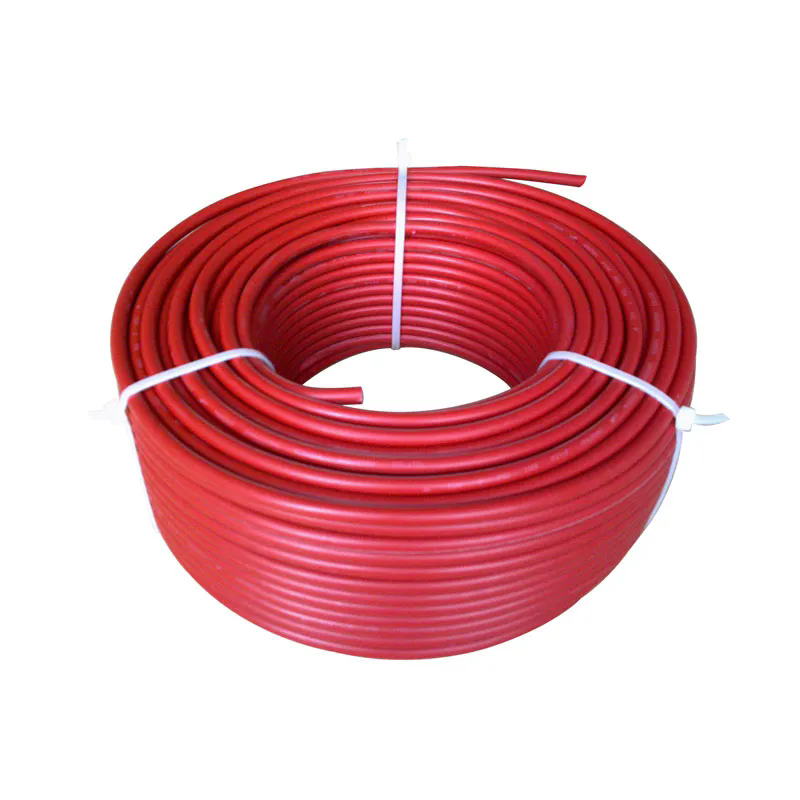Why Is PV Cable Essential for Solar Power Systems?
2024-11-15
As the world moves toward cleaner, more sustainable energy sources, solar power has emerged as a key player in reducing carbon emissions and providing renewable energy. But behind every solar power system, there’s a crucial component that ensures energy flows smoothly and safely from solar panels to the grid: PV cable. But why is PV cable essential for solar power systems?
In this blog, we’ll explore the role of PV cable in solar installations, its key features, and why choosing the right type of cable is critical for the performance, longevity, and safety of your solar power system.
What is PV Cable?
PV cable (Photovoltaic cable) is a type of electrical wire specifically designed for use in solar power systems. It connects solar panels to the inverter and other components of the system, allowing the direct current (DC) electricity generated by the panels to be transferred efficiently and safely. PV cables are built to withstand the unique environmental challenges that solar installations face, such as exposure to UV rays, moisture, and temperature fluctuations.
Why Is PV Cable Important for Solar Power Systems?
1. Ensures Safe Power Transmission
The primary function of PV cable is to transmit electricity from the solar panels to the inverter and from the inverter to the grid or battery storage. Solar panels generate DC electricity, and PV cables are designed to safely carry this electricity over long distances, ensuring minimal power loss.
- Safety is a top priority in any electrical system, and the durability of PV cables ensures that power is transmitted without the risk of short circuits, overheating, or electrical fires.
In addition, high-quality PV cables are often double-insulated, providing extra protection against electrical faults. This is especially important in environments with high moisture or potential physical damage from animals or mechanical wear.
2. Durability in Harsh Environments
Solar power systems are often installed outdoors, exposed to a wide range of weather conditions, including extreme temperatures, UV radiation, moisture, and even chemical exposure. Standard electrical wires aren’t built to withstand these harsh environmental factors, which is why PV cable is specifically engineered to perform reliably in these conditions.
- UV resistance ensures that the cable doesn’t degrade when exposed to sunlight for prolonged periods.
- Waterproofing makes sure the cables remain intact even in wet or humid environments.
- Temperature resistance allows the cables to operate efficiently in both extremely cold and hot temperatures, maintaining flexibility and preventing cracking or brittleness.
This weather-resistant construction ensures that PV cables will last for the life of the solar power system, which can be 20-30 years or more.
3. Efficient Power Flow and Minimal Loss
The design of PV cables contributes to the efficient transmission of power. Since solar systems typically involve multiple panels connected in series or parallel, it’s essential that the cables provide low resistance to electrical current.
- High-quality PV cables are designed with high-conductivity materials like copper or aluminum, ensuring that electricity flows with minimal loss. This efficiency is vital for maximizing the energy output of your solar panels, especially when dealing with long cable runs or larger installations.
Efficient cables mean more of the energy produced by the solar panels is effectively transferred to the inverter and subsequently used or stored, improving the overall performance of the solar power system.
4. Compliance with Safety Standards
Safety is paramount in any electrical installation, and PV cables are built to meet or exceed international standards for solar power systems. These standards, such as IEC 60216 and UL 4703, ensure that the cables are properly insulated and capable of handling the electrical loads generated by solar panels without risk of overheating, fire, or damage.
Compliance with these safety standards gives peace of mind to homeowners, installers, and utility providers, knowing that the cable has been tested for durability, safety, and performance under various conditions.
5. Long-Term Reliability and Cost-Effectiveness
While PV cables may have a higher upfront cost compared to regular cables, their long-term reliability and performance make them a cost-effective investment for solar power systems. Since these cables are designed to last for decades, they reduce the need for frequent replacements or repairs, ultimately lowering maintenance costs over time.
In addition, because they improve the overall efficiency of a solar installation, choosing high-quality PV cables helps to maximize energy production, which can improve the return on investment for solar power systems.
Types of PV Cable: Which One Should You Choose?
There are a few different types of PV cables, each with specific characteristics tailored to different solar system configurations:
1. Solar Cable (Single-Core)
Single-core cables are typically used in direct connections between solar panels and other components, such as the inverter. These cables are generally designed for ease of installation and cost efficiency.
- Use: Often used for wiring solar arrays in residential and commercial rooftop systems.
2. Twin-Core Solar Cable
Twin-core cables have two wires (positive and negative) bundled together in a single sheath. They are ideal for installations that require both positive and negative conductors in a single run, making them easier to manage and install.
- Use: Commonly used in solar systems where both conductors need to run together, such as in centralized inverter setups.
3. High Voltage Solar Cable
For larger commercial or utility-scale solar projects, high-voltage cables are used. These cables are designed to handle higher voltages and can be used for longer-distance power transmission without significant power loss.
- Use: Utilized in larger-scale solar farms and commercial installations where higher voltage levels are required.
Where Is PV Cable Used?
PV cables are primarily used in solar power systems, including:
- Residential solar installations: Connecting panels on the roof to the inverter and battery storage systems.
- Commercial solar projects: Wiring large arrays of panels to centralized inverters or power management systems.
- Utility-scale solar farms: Power transmission from large solar arrays to the grid or energy storage systems.
Conclusion
So, why is PV cable essential for solar power systems? Simply put, it’s the lifeblood of your solar power system. Without PV cable, there would be no reliable or safe way to transmit the electricity generated by your solar panels to the inverter, battery storage, or the power grid. With the unique challenges of outdoor environments, the durability, efficiency, and safety of PV cables are critical to ensuring long-term performance and reducing energy losses.
When designing or installing a solar power system, selecting the right PV cable is essential for maximizing energy production, ensuring system safety, and maintaining the reliability of your installation over time. As solar energy continues to grow as a mainstream power source, the importance of high-quality, durable PV cables will only continue to increase, powering the future of renewable energy with efficiency and reliability.



